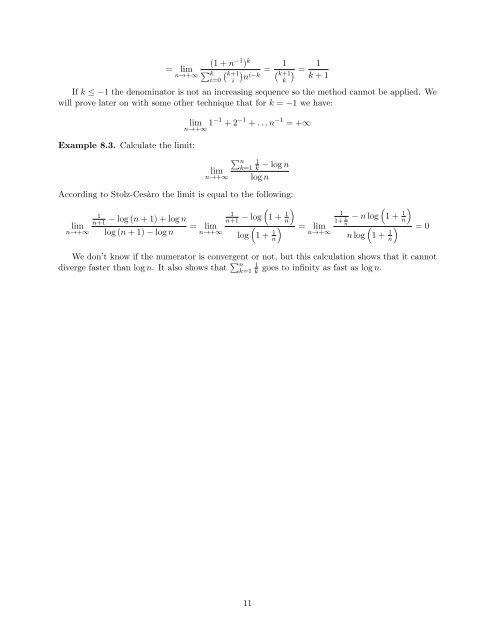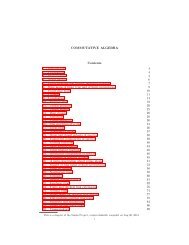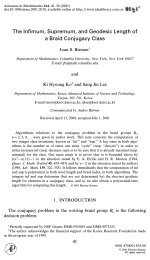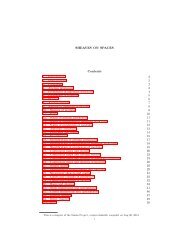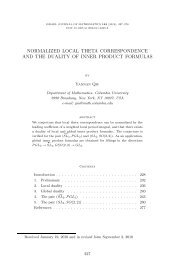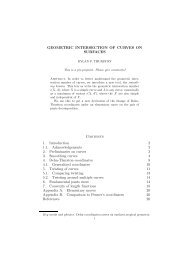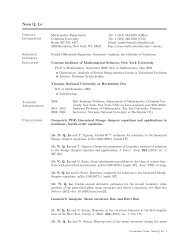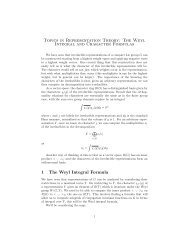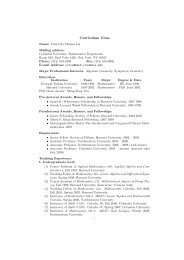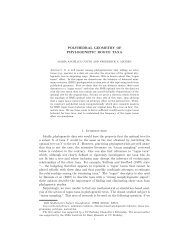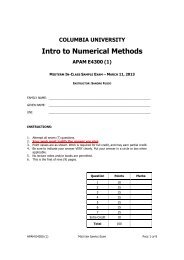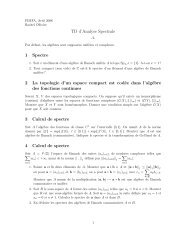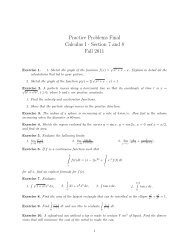Sequences CheatSheet
Sequences CheatSheet
Sequences CheatSheet
You also want an ePaper? Increase the reach of your titles
YUMPU automatically turns print PDFs into web optimized ePapers that Google loves.
= lim<br />
n→+∞<br />
(1 + n −1 ) k<br />
k<br />
i=0<br />
k+1<br />
i<br />
n i−k<br />
= 1<br />
k+1<br />
k<br />
= 1<br />
k + 1<br />
If k ≤ −1 the denominator is not an increasing sequence so the method cannot be applied. We<br />
will prove later on with some other technique that for k = −1 we have:<br />
Example 8.3. Calculate the limit:<br />
lim<br />
n→+∞ 1−1 + 2 −1 + . . . n −1 = +∞<br />
lim<br />
n→+∞<br />
n k=1 1<br />
k − log n<br />
log n<br />
According to Stolz-Cesàro the limit is equal to the following:<br />
<br />
1<br />
1<br />
n+1 − log (n + 1) + log n<br />
n+1 − log 1 +<br />
lim<br />
= lim<br />
n→+∞ log (n + 1) − log n n→+∞<br />
1<br />
<br />
n<br />
= lim<br />
n→+∞<br />
log<br />
1 + 1<br />
n<br />
1<br />
1+ 1<br />
n<br />
<br />
− n log 1 + 1<br />
<br />
n log<br />
1 + 1<br />
n<br />
n<br />
<br />
= 0<br />
We don’t know if the numerator is convergent or not, but this calculation shows that it cannot<br />
diverge faster than log n. It also shows that n k=1 1<br />
k goes to infinity as fast as log n.<br />
11


